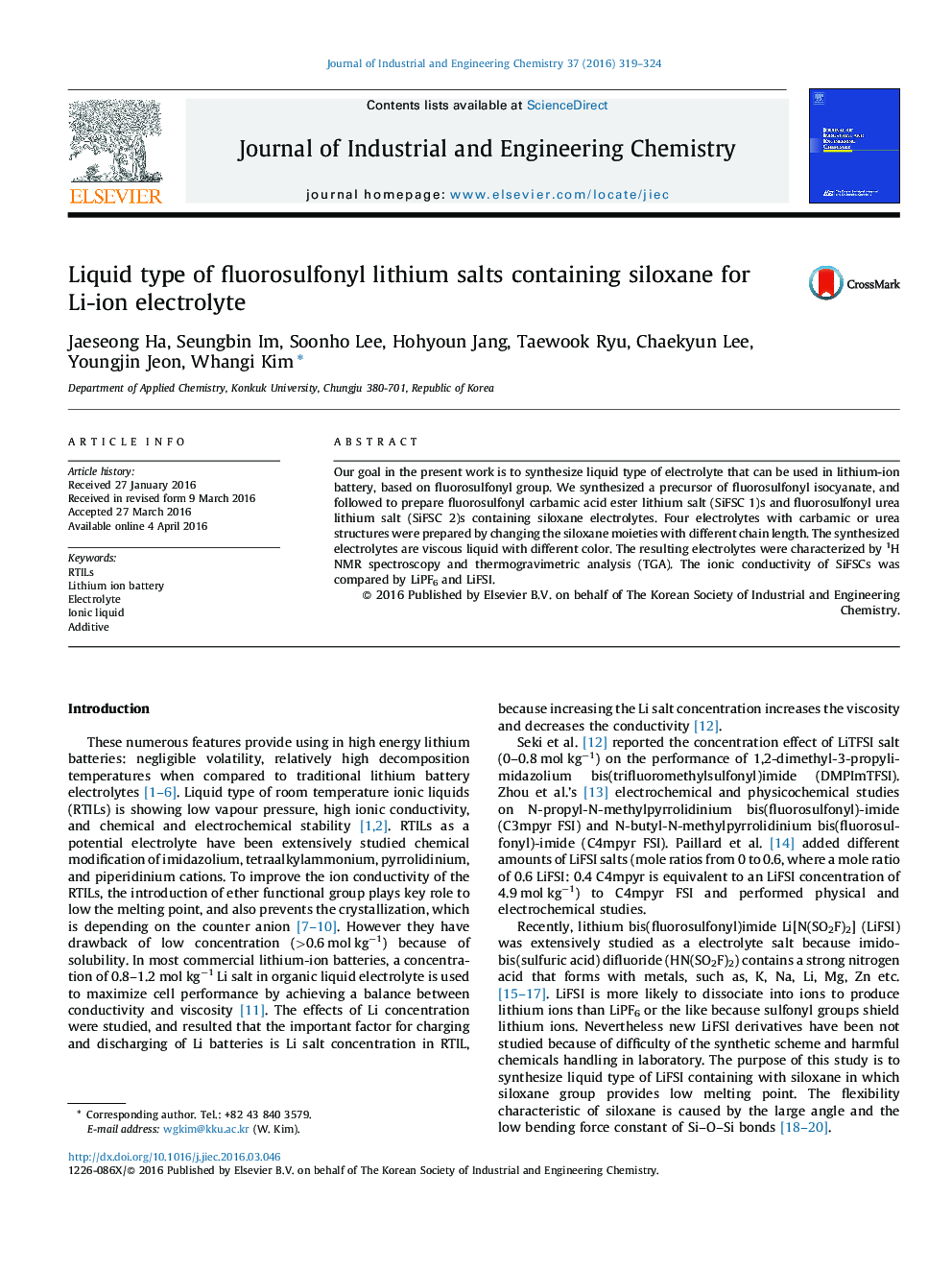| Article ID | Journal | Published Year | Pages | File Type |
|---|---|---|---|---|
| 227299 | Journal of Industrial and Engineering Chemistry | 2016 | 6 Pages |
•We synthesized siloxane electrolyte containing fluorosulfonyl carbamic acid lithium salts.•Siloxane electrolytes showed different features according to siloxane chain length.•The chemical structures of the prepared electrolytes (SiFSC 1 and SiFSC 2) were identified by 1H NMR.
Our goal in the present work is to synthesize liquid type of electrolyte that can be used in lithium-ion battery, based on fluorosulfonyl group. We synthesized a precursor of fluorosulfonyl isocyanate, and followed to prepare fluorosulfonyl carbamic acid ester lithium salt (SiFSC 1)s and fluorosulfonyl urea lithium salt (SiFSC 2)s containing siloxane electrolytes. Four electrolytes with carbamic or urea structures were prepared by changing the siloxane moieties with different chain length. The synthesized electrolytes are viscous liquid with different color. The resulting electrolytes were characterized by 1H NMR spectroscopy and thermogravimetric analysis (TGA). The ionic conductivity of SiFSCs was compared by LiPF6 and LiFSI.
Graphical abstractA new route for the synthesis of LiFSI (Si-LiFSI) derivatives containing siloxane was presented. Si-LiFSI derivatives were shown viscous liquid and solid depending on the different chemical structures. SiFSC 1 and 2 were difficult to prepare 1 M electrolyte because of solubility problem. Therefore 4 different electrolyte were prepared in the different mole (LiFSI:SiFSCs = 0.9:0.1 and 0.7:0.3 mol) in EC/DEC (5:5), and LiFSI at 20 °C. The ion conductivities of SiFSC 1 and SiFSC 2 were lower than LiFSI because of solubility even though they are liquid. These results were shown the new candidate electrolytes and they provide valuable information for further studies of ionic liquid-based electrolytes to develop liquid state lithium ion battery.Figure optionsDownload full-size imageDownload as PowerPoint slide
